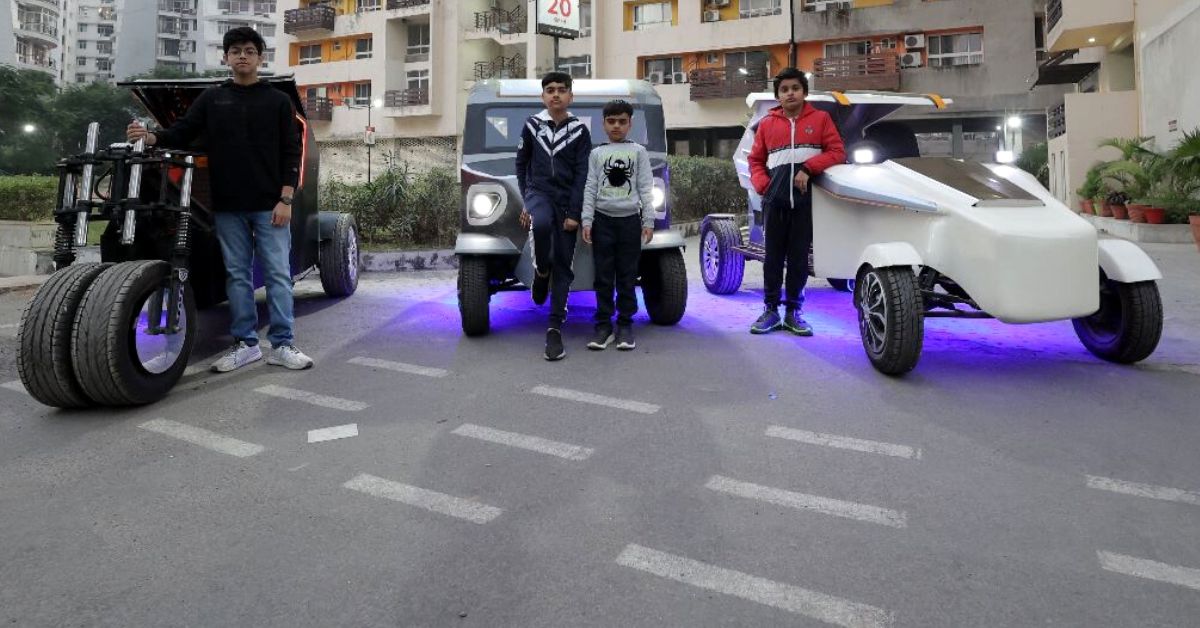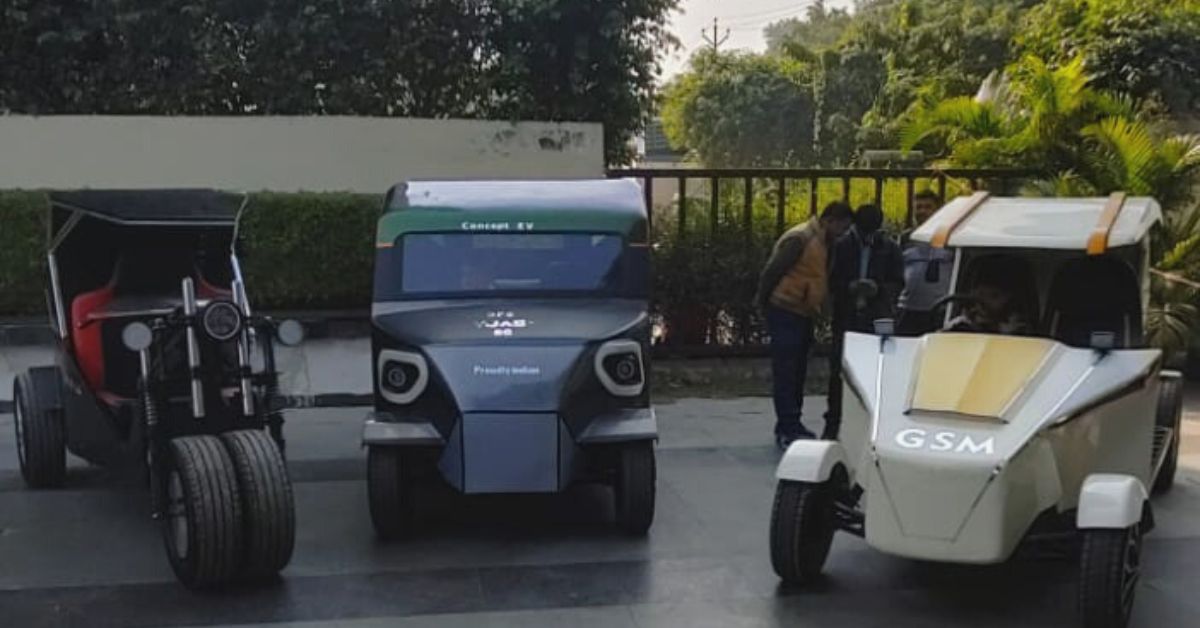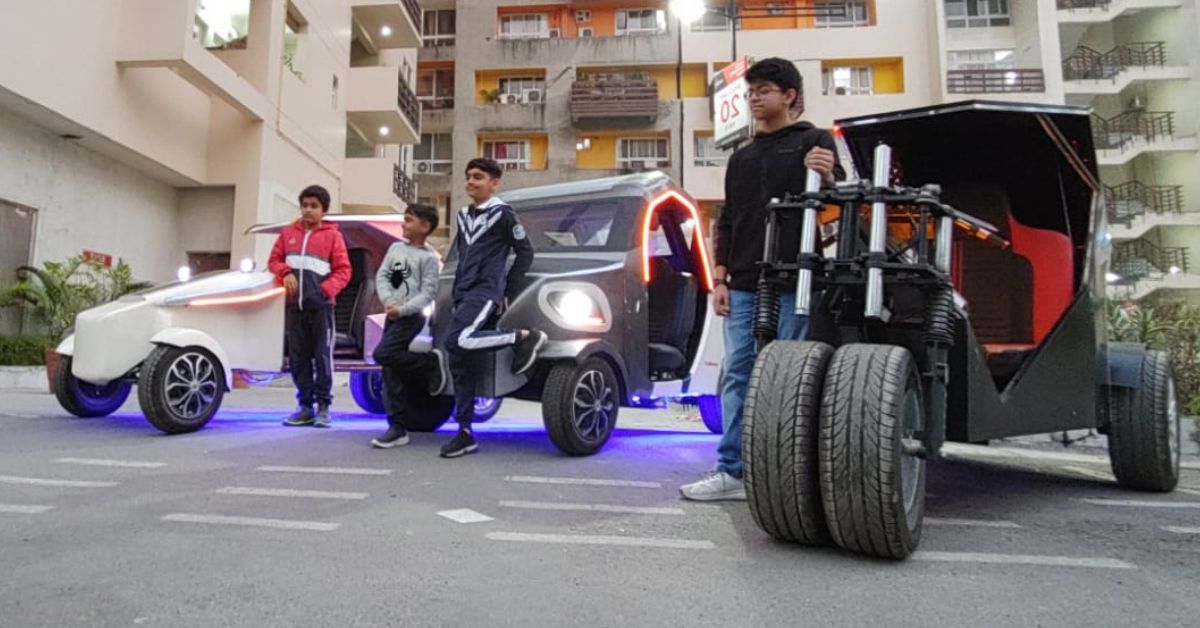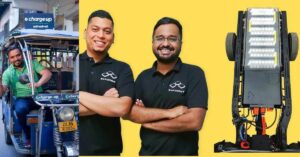4 Lucknow School Kids Innovate E-Vehicles That Clean Air When Being Driven
Four school-going children in Lucknow — Viraj, Garvit, Shreyansh, and Aryav, have manufactured battery-powered electric cars that clean outside air when being driven.

These children do not buy toys; instead, they make their own. And while doing so, they are ensuring sustainability and supporting India’s vision for a clean and green future.
In Uttar Pradesh’s Lucknow, four school-going children have built three environment-friendly cars, which cause neither sound nor air pollution. Instead, they clean the surrounding air when driven.
An 11-year-old, Viraj Amit Mehrotra is one of the manufacturers of these battery-powered electric vehicles (EVs).
Explaining their features, he says, “Our cars have a BrushLess Direct Current Motor of 1,000 Watt, 1200 Watt, and 1400 Watt. They come with a special feature called DFS or Dust Filtration System, which acts like an air purifier for a car. It cleans up to six feet of dust-laden air from the surroundings.”

Viraj manufactured these cars along with three other young innovators — Garvit Singh (12), Shreyansh Mehrotra (14), and his younger brother Aaryav Amit Mehrotra (9). The kids say they were inspired by Elon Musk, the CEO of Tesla, an automotive company that makes electric cars.
“Presently, EVs in India are too expensive to be afforded by everyone. They can cost up to Rs 60 lakh per car; the Tesla car itself costs up to Rs 2 crore. So, we wanted to build cost-effective cars that also clean the environment,” says Viraj, who has made his friends and family proud with the innovation.
He aspires to become a teacher of engineering and help his students chase their passion.
What is Dust Filtration System?
The young manufacturers designed a very unique concept called Dust Filtration System or DFS, which is a multi-channel layer pollution-absorbing technology. It captures suspended dust from the tyres of the car while taking in the polluted air, which then goes through multiple channels to finally emit fresh air.
“If cars running on DFS are used everywhere, the outdoor air quality will get better than the indoors,” says Milind Raj, the founder of a robotics and innovation company called ‘Roboz.in’.
The young innovators who refer to themselves as ‘Four-ever’ were mentored by Raj.
“These children are very curious about science and technology. In 2020, when schools in many cities started shutting down due to rising air pollution, these kids came up with an idea to make a net zero emission vehicle to make India pollution free,” he says. “Soon, they came up with designs and processes, and after around 250 days of hard work and multiple failures, they manufactured three different EVs — Murcielago, GSM, and VJS.”
Raj continues, “These kids used to work on the prototypes after school and even on holidays including Sundays. They never went out on vacation or even celebrated their birthdays during this time. Instead, they invested their time to completely focus on these machines. Their entire ecosystem, their thoughts and approach towards life has changed.”
A four-wheeler at the cost of a two-wheeler
Unique in designs and specifications, the electric cars are drivable and are first prototypes of a net zero emission EV, designed by the youngest scientists, claims Raj.
He says that the battery-powered EV runs on a lead acid battery, which is detachable, making it a good fit for a battery swap. “It takes around three hours for the electric cars to charge. With 1.6 horsepower, these vehicles have a range between 70 and 90 kilometres per hour,” informs the robotic expert.
Among the four-wheeler electric cars, one is a three-seater, another is a two-seater, and the third one is a one-seater. “While the research and development cost the team Rs 1.5 lakh, the estimated cost to manufacture one such car is Rs 95,000,” says Raj. “The annual maintenance is expected to be between Rs 2,000 and Rs 3,000.”

These days, even a two-wheeler costs around Rs 90,000, he says adding, “We are going to keep a profit margin of up to 25 per cent, and it will still be affordable for every section. Our aim is that every family, including the middle and lower middle class, should have access to an affordable electric car. Many people are waiting for the launch.”
The kids received financial support from their families and their mentor.
“We tried to bring down the cost of manufacturing with minimum resources to get maximum output. So, we used scrap and recycled materials such as metal rods, metal sheets, and simple machinery hardware systems. The kids even performed gas welding and arc welding all by themselves,” explains the mentor.
Raj shares that in 1895, Lord Kelvin stated that “heavier-than-air flying machines are impossible”. A few years later in 1903, the Wright brothers invented and flew the first aeroplane, recognised as the first sustained and controlled heavier-than-air powered flight.
So, it’s not uncommon in science to turn implausible situations into real possibilities.
कल 5 दिसम्बर को विधानसभा के सामने आयोजित कार्यक्रम में श्री मिलिन्द राज जी के पर्यवेक्षण में विशेष इलेक्ट्रिक वाहनों को बनाने वाले देश के सबसे कम उम्र के नन्हें भारतीय वैज्ञानिक/ अभियंता बच्चों से मिलने का सुअवसर मिला।
देश के नौनिहालों की प्रतिभा देखकर अत्यन्त प्रसन्नता हुई। pic.twitter.com/Brsr8Fd987— D.S. Mishra, Chief Secretary, GoUP (@ChiefSecyUP) December 6, 2022
“No one believed that these children could create these cars on their own. But, after just two years, these cars were right in front of Vidhan Sabha, where the government acknowledged their efforts. So anything you imagine can be real,” concludes Raj.
The team aims to add 5G features to their electric cars in 2023, which will allow them to be moved anywhere using mobile phone applications.
Edited by Pranita Bhat
This story made me
- 97
- 121
- 89
- 167
Tell Us More
We bring stories straight from the heart of India, to inspire millions and create a wave of impact. Our positive movement is growing bigger everyday, and we would love for you to join it.
Please contribute whatever you can, every little penny helps our team in bringing you more stories that support dreams and spread hope.



















